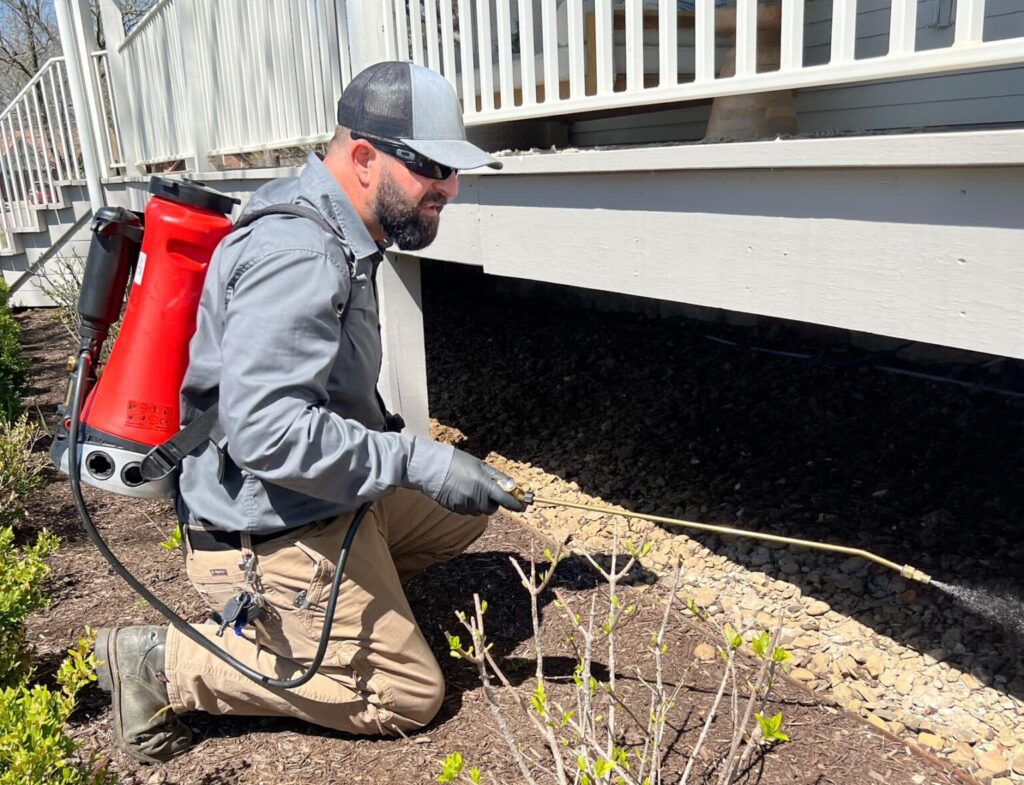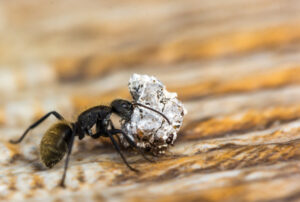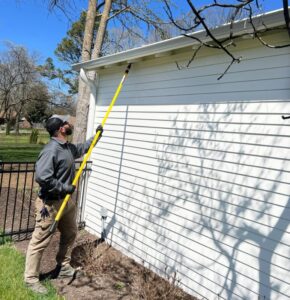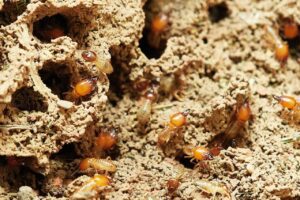Winter in Northwest Arkansas brings more than chilly temperatures and holiday cheer. From rodents infiltrating attics to spiders nesting in basements, the colder months bring in a surge of pests seeking warmth, shelter, and food.
This guide explores the nuances of monthly and quarterly pest control plans, empowering homeowners to make informed decisions that align with their needs, budgets, and regional pest pressures.

Understanding Winter Pest Dynamics in Northwest Arkansas
Winter pests are opportunistic. Mice, rats, and spiders exploit cracks in foundations, gaps around pipes, and cluttered storage areas to escape the cold. Subterranean termites remain active year-round, burrowing deeper into the soil to avoid freezing temperatures while overwintering insects like stink bugs cluster in wall voids.
Proactive pest control during winter disrupts these invasion patterns. However, the frequency of treatments—monthly or quarterly—depends on factors like property age, prior infestation history, and proximity to wooded areas.
Monthly Pest Control
Monthly plans are ideal for homeowners with persistent pest activity or in high-risk zones. 30-day inspections can help in addressing emerging threats before they escalate. For example, a mouse sighting in December could indicate a nearby nest, requiring immediate exclusion measures and bait station installations.
While monthly services involve higher upfront costs, they mitigate long-term expenses like structural repairs from termite damage or electrical fires caused by gnawed wires.
Quarterly Pest Control
Quarterly plans strike a middle ground, offering robust protection at a lower frequency. Its success lies in the use of long-lasting formulas that remain effective for 90 days, if not longer. With four annual visits, homeowners save approximately 30% compared to monthly plans—a practical choice for newer homes with fewer vulnerabilities
Quarterly plans suit homes without prior infestations but require diligence. For instance, gaps in treatments could allow spiders to establish colonies between visits, necessitating supplemental spot treatments.
Winter-Specific Strategies Against Pests
Beyond frequency, the company’s winter protocols should integrate eco-conscious methods and localized insights.
For example, technicians should use steel wool, copper mesh, and weather-resistant sealants to fortify entry points, a particularly important step for homes near agricultural fields where field mice thrive, like in Fayetteville. Winter rains also exacerbate mold and pest attraction. Gutter maintenance and crawl space ventilation can help reduce habitats for silverfish and cockroaches.
With the application of winter-specific pest control and regular monitoring, it’s possible to prevent recurrence.
However, the decision between monthly and quarterly pest control is best left to the experts, who will adapt their treatment plans based on initial risk assessments and follow-up findings.
Making the Decision: Five Factors to Evaluate
- Infestation History: Homes with past termite or rodent issues benefit from monthly pest control.
- Property Age and Condition: Older homes often require frequent sealing updates.
- Proximity to Pest Habitats: Wooded lots, water sources, or unmaintained neighboring properties heighten risk.
- Budget Constraints: Quarterly plans offer savings but may necessitate supplemental treatments.
- Health Concerns: Families with allergies or asthma might prioritize monthly bed bug and cockroach control.
Act Now to Secure Your Home This Winter
Pests don’t hibernate—they adapt. Whether opting for monthly precision or quarterly efficiency, Allen Pest Management delivers solutions rooted in science and community trust. Schedule a free winter pest inspection today by calling (479) 544-2847 or visiting allenpestnwa.com.
Protect your home’s comfort, safety, and value with a plan as unique as Northwest Arkansas’s seasonal challenges.







